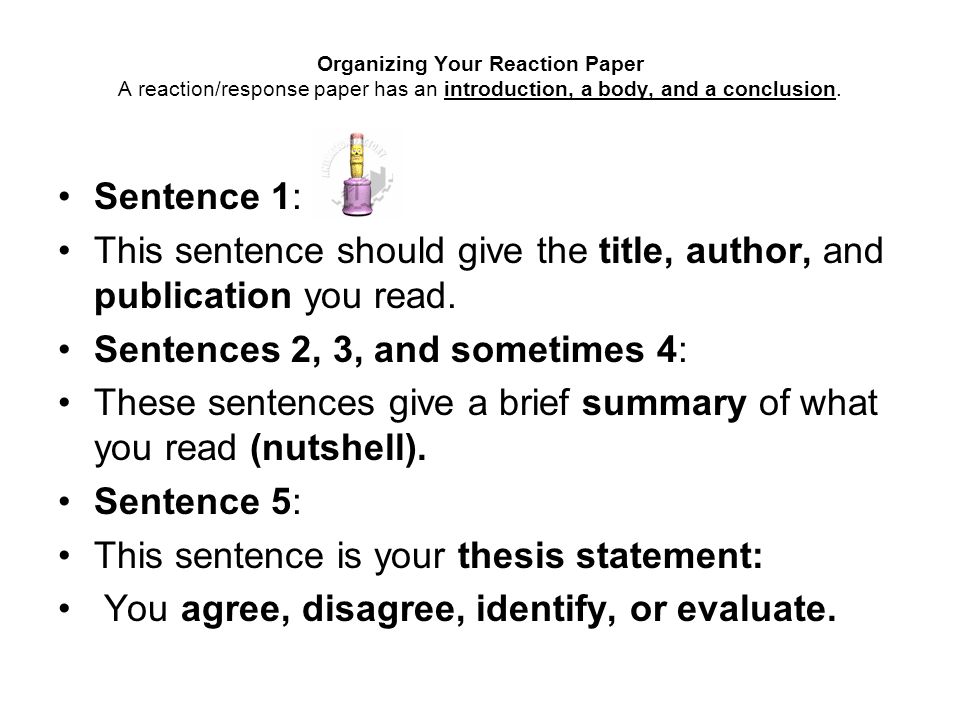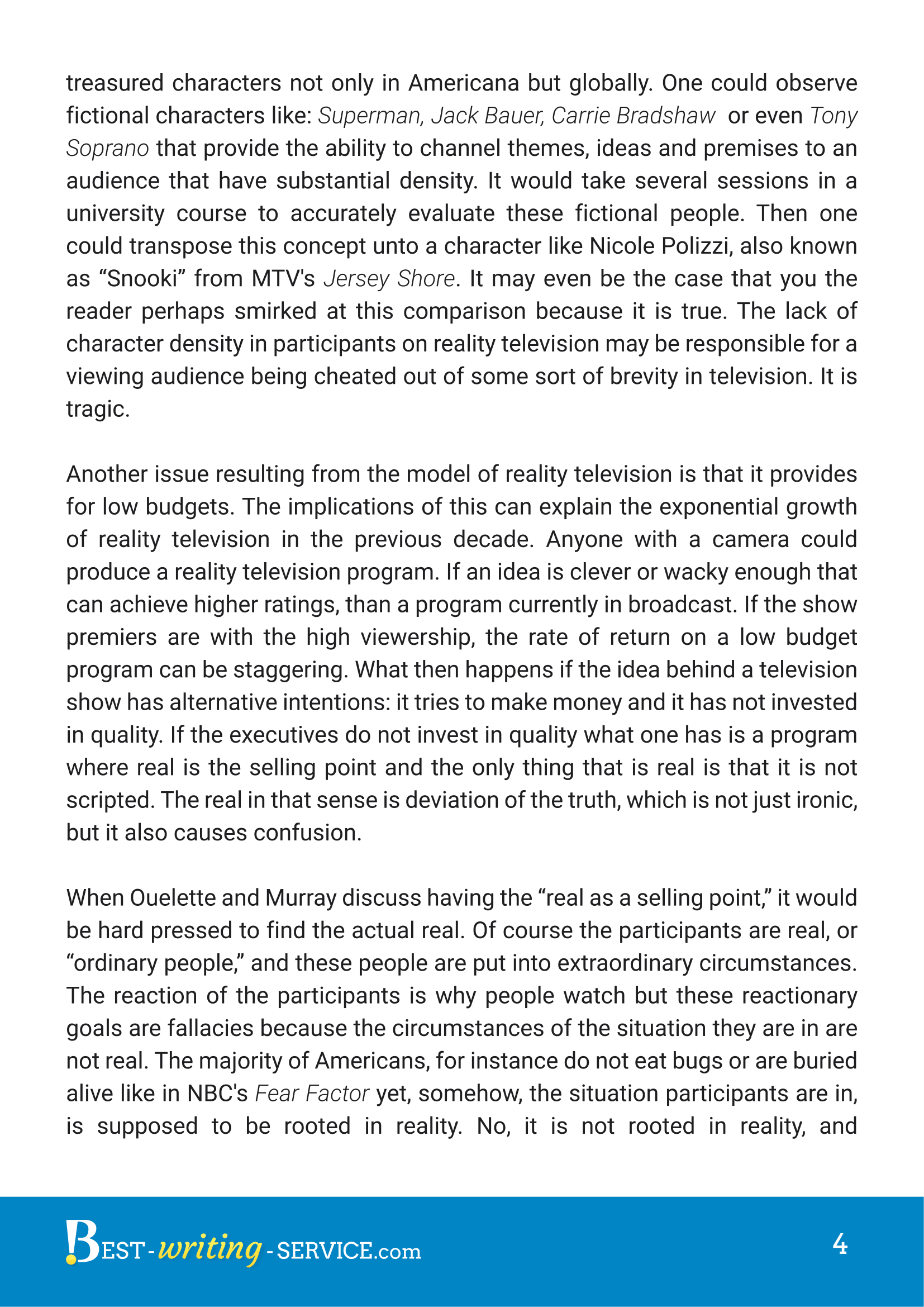
CESL, University of Cincinnati Outline of Summary and Response Essay I. In the articles “Reading in a Foreign Language” and “An Immigrant Learns Two New Languages” the author talk about two unique individuals' experience of learning a subsequent language. a. The principal article "Reading in a Foreign Language", composed by Soctt Esposito, which was distributed in his blog, Esposito Two Typical Organizational Formats for Summary/Response Essays: 1. Present the summary in a block of paragraphs, followed by the response in a block: Intro/thesis Summary (two to three 2. Introduce the essay with a short paragraph that includes your thesis. Then, each body paragraph · How to Write a Summary and Response Essay Introduction. Very often students are required to perform different academic assignments during their educational Steps in Writing. In order to write an effective summary or response essay, it is important that students have a
Writing Effective Summary and Response Essays
Virginia has been a university English instructor for over 20 years. She specializes in helping people write essays faster and easier. Author Tag : You need to start your summary by telling the name of the article and the author. Here are three examples of how summary response essay outline do that pay close summary response essay outline to the punctuation :. First Sentence: Along with including the article's title and author's name, the first sentence should be the main point of the article, summary response essay outline.
It should answer the question: What is this essay about? In "How the Civil War Began" by John Jones, the author argues that the real reason for the start of the Civil War was not slavery, as many believe, but was instead the summary response essay outline of cultures and greed for cash. Rest of Summary: The rest of your essay is going to give the reasons and evidence for that main statement. In other words, what is the main point the writer is trying to make, and what are the supporting ideas he or she uses to prove it?
Does the author bring up any opposing ideas, and if so, what does he or she do to refute them? Here is a sample sort of sentence:. You don't need to mention the author in every sentence of a summary, but you do need to make it clear when an idea is from the article and when it is your own idea. Usually, you want to be sure to tell the title of the article and the full name of the author in the first sentence of your summary.
After that, use the author's last name or the title when you want to summarize something from the article or book. To avoid sounding too repetitious, you can substitute words in the table below. For articles with authors, cite all of the authors the first time you mention the article and title.
Afterward, use "authors" or the last name of the first author and "et al. For articles with more than 4 authors, use the first and last name of the first author in the opening sentence and "et al. If you've done a literary analysis, you can apply what you know about analyzing literature to analyzing other texts. You will want to consider what is effective and ineffective.
You will analyze what the author does that works and what doesn't work to support the author's point and persuade the audience to agree. Analysis requires knowing who the author is trying to persuade and what he or she wants the audience to think, do, or believe.
By Thea Goldin Smith [CC-BY Sometimes, especially when you're just getting started writing, the task of fitting a huge topic into an essay may feel daunting and you may not know where to start.
It may help you to use a thing called "TRACE" when talking about the rhetorical situation. TextReaderand Author are easy to understand. When writing the analysis, summary response essay outline, you need to think about what kind of text it is and what the author wanted to have the audience think, summary response essay outline, or believe.
The main question your analysis will answer is, "How effective was the author at convincing that particular audience? Context means several things: how the article fits into the history of discussion of that issue, the historical moment in time when the article is written, and the moment in time when a person reads the article. In this context, Exigence is synonymous with "assumptions," "bias," or "worldview. Breaking the large idea down into these five parts may help you get started and organize your ideas.
In your paper, you'll probably want to address three to five of these elements. Each of the following elements can be one paragraph of your analysis. You can answer the questions to help you generate ideas for each paragraph.
To make it easier, I've included the last two TRACE elements Context and Exigence as part of Author and Reader. Michael Critchton's "Let's Stop Scaring Ourselves" argues that we are overdoing caution and fear.
See my Sample Reading Response to this essay as well. Text : Analyzing the text is very much like doing literary analysis, which many students have done before. Use all of your tools of literary analysis, including looking at the metaphors, rhythm of sentences, construction of arguments, tone, style, and use of language.
You can do the same for this sort of analysis. For example, summary response essay outline, in my sample reading the response about Michael Crichton's "Let's Stop Scaring Ourselves" article, students noted that the fact that Crichton is the author of doomsday thrillers like Andromeda Strain and Jurassic Park makes his argument that we shouldn't pay much attention to current doomsday scenarios like global warming rather ironic.
If you don't know anything about the author, you can always do a quick Google Search to find out. Sample format:. Reader: You can write this section by inferring who the intended reader is, as well as looking at the text from the viewpoint of other sorts of readers.
For example. Generally, your response will be the end of your essay, but you may include your response throughout the paper as you select what to summarize and analyze. Your response will also be evident to the reader by the tone that you use and the words you select to talk about the article and writer. However, your response in the conclusion will be more direct and specific.
It will use the information you have already provided in your summary and analysis to explain how you feel about this article, summary response essay outline. Most of the time, your response will fall into one of the following categories:. You can use summary response essay outline answers to the questions above to help you formulate your response. Here is a sample of how you can put this together into your essay for more sample essays, see the links above :.
Question: I have to summarize and respond to an article. How would I start my thesis? Answer: Your thesis is the main idea of the article and your main response to it.
Answer: The best way to summarize an essay is to start by quickly reading it through. After you read it once, write down what you think the main idea of the author is or pick the one sentence which seems to tell the main point or thesis of the article.
Next, read it again more slowly. This time, underline or highlight the main topic sentence in each paragraph. Then, re-write each of these sentences in their own words either on a hard copy of the summary response essay outline or in a Word document.
Now you can take all of those re-written topic points and use those as the basis of your summary. Re-read all of those sentences, and you should have all of the main ideas of the essay.
If you realize there is something missing, then you will have to write that in. However, you aren't finished yet because your summary needs to flow summary response essay outline a smooth paragraph. So take what you've written and re-write it to have the sentences make sense and flow together. Use my Easy Words for Starting Sentences article to help you use the transition words that show the linking of ideas next, furthermore, moreover, however, on the one hand, not only, but also, summary response essay outline.
If you want to do a really exceptional job, once you have finished your summary, you should go back and look at the original article one last time. Compare your summary with the article and ask yourself these questions:. Answer: After the salutation, you need to write your main thesis in a roadmap form.
Usually, summary response essay outline, you either agree, disagree or agree with parts and disagree with other parts, summary response essay outline. Alternatively, your response could talk about how the text made you reflect on something in your own experience.
Answer: In a SAR paper, the conclusion should usually be your response to the article. That means that you will tell the reader what you think about it, including whether you liked it, what you learned from it, how it reminded you of something in your own experience, or how it changed your thinking. Answer: You might want to discuss this with your instructor, summary response essay outline, but I suspect that "opinion analysis" is just a different way of saying "analysis and response.
You can do an analysis without first doing a summary. Just follow the instructions in this article. Does the information include everything needed for the audience to understand the issue or subject? Answer: A summary means you are telling the main idea of someone else's article, book, or other text.
A thesis is your idea and the main point of your essay. If you are writing a summary and response paper, you will need to say what the main idea is of the article you are summarizing and then your thesis would be your response to that article. Here are some types of thesis responses you could make:, summary response essay outline. The article by James John is interesting and insightful, but it uses too much detail to describe each point, and I became bored and unconvinced that he had the right solution to the problem of XX.
James John's article was garbled and difficult summary response essay outline read, but I found that his main thesis got right to the point and actually gave me insights I could apply to my life in the area of XX. Although I thought James John's article was somewhat simplistic and short, I found summary response essay outline many of his examples resonated with my own experiences and made me think about his ideas for several days, summary response essay outline, giving me insights about how I could have better responded when XX.
Question: What if there are two authors of an article or book? Do I have to use both their names or just one of them and the article or book title? Answer: If both authors are listed on the cover, I would use both names when you first mention the article. Afterward, it would be easier to refer to them by saying "the authors" or using "the article.
Answer: It is always better to summarize or paraphrase rather than using quotes to state the main idea of your paper or the summary. Question: We have to write an analysis in 6 to 7 sentences. How can I keep my analysis that short? Answer: You will need to focus on just a few aspects of the article and make sure the evidence for your point is included briefly in each sentence. The first sentence should be your main thesis about how the article is effective and if applicable, summary response essay outline, what is ineffective, summary response essay outline.
Use a couple of sentences to elaborate on what is effective and a couple to show what is ineffectively done. End with a conclusion of how the article is useful to readers. Question: I have to summarize and evaluate an essay. How can I evaluate efficiently? Answer: Read your article and before you begin your summary, make a table. On one side of the table, write out the main points of the article.
How to Write a Summary Response Essay: American English Academic Writing - Speaking with Steph
, time: 9:35How to Write a Summary and Response Essay Example For Students - words | Artscolumbia

Two Typical Organizational Formats for Summary/Response Essays: 1. Present the summary in a block of paragraphs, followed by the response in a block: Intro/thesis Summary (two to three 2. Introduce the essay with a short paragraph that includes your thesis. Then, each body paragraph Outline Template: Summary and Response Essay I. Introduction a. Follows one of the models in Inquiry, Chapter 9 b. Narrows toward the specific topic II. Summary Paragraph a. First line includes author full name, full title of text, and gist of author’s main point b CESL, University of Cincinnati Outline of Summary and Response Essay I. In the articles “Reading in a Foreign Language” and “An Immigrant Learns Two New Languages” the author talk about two unique individuals' experience of learning a subsequent language. a. The principal article "Reading in a Foreign Language", composed by Soctt Esposito, which was distributed in his blog, Esposito

No comments:
Post a Comment